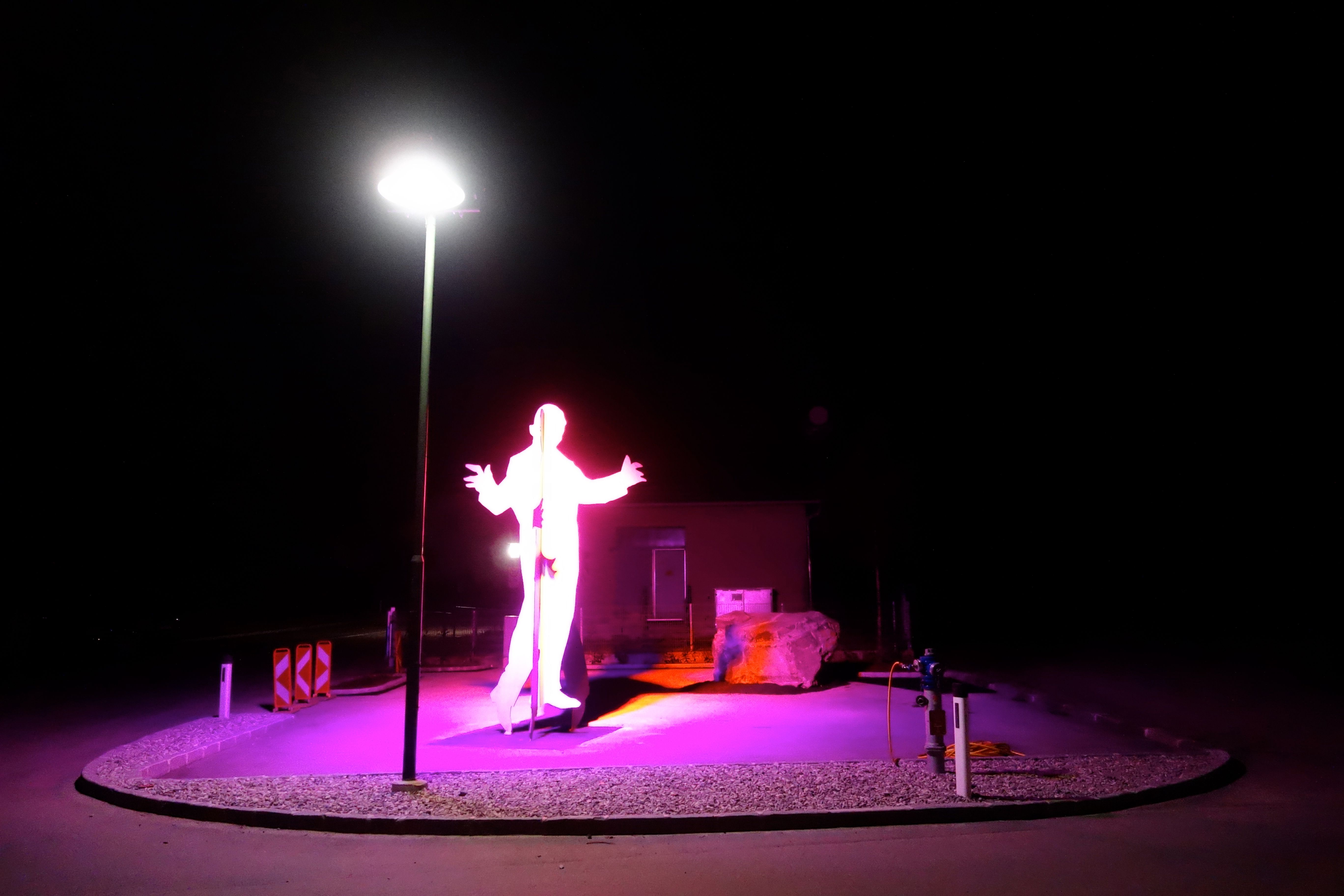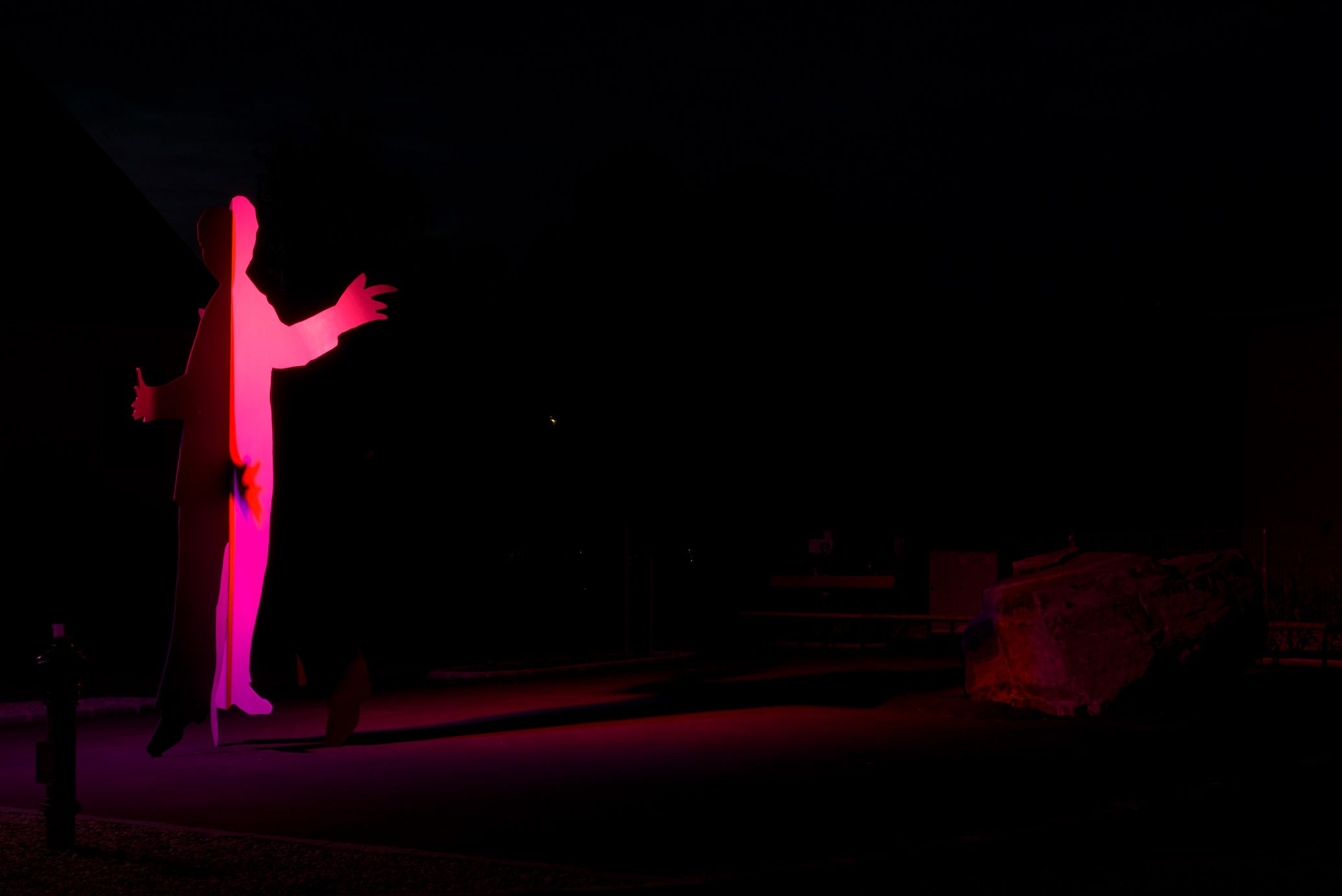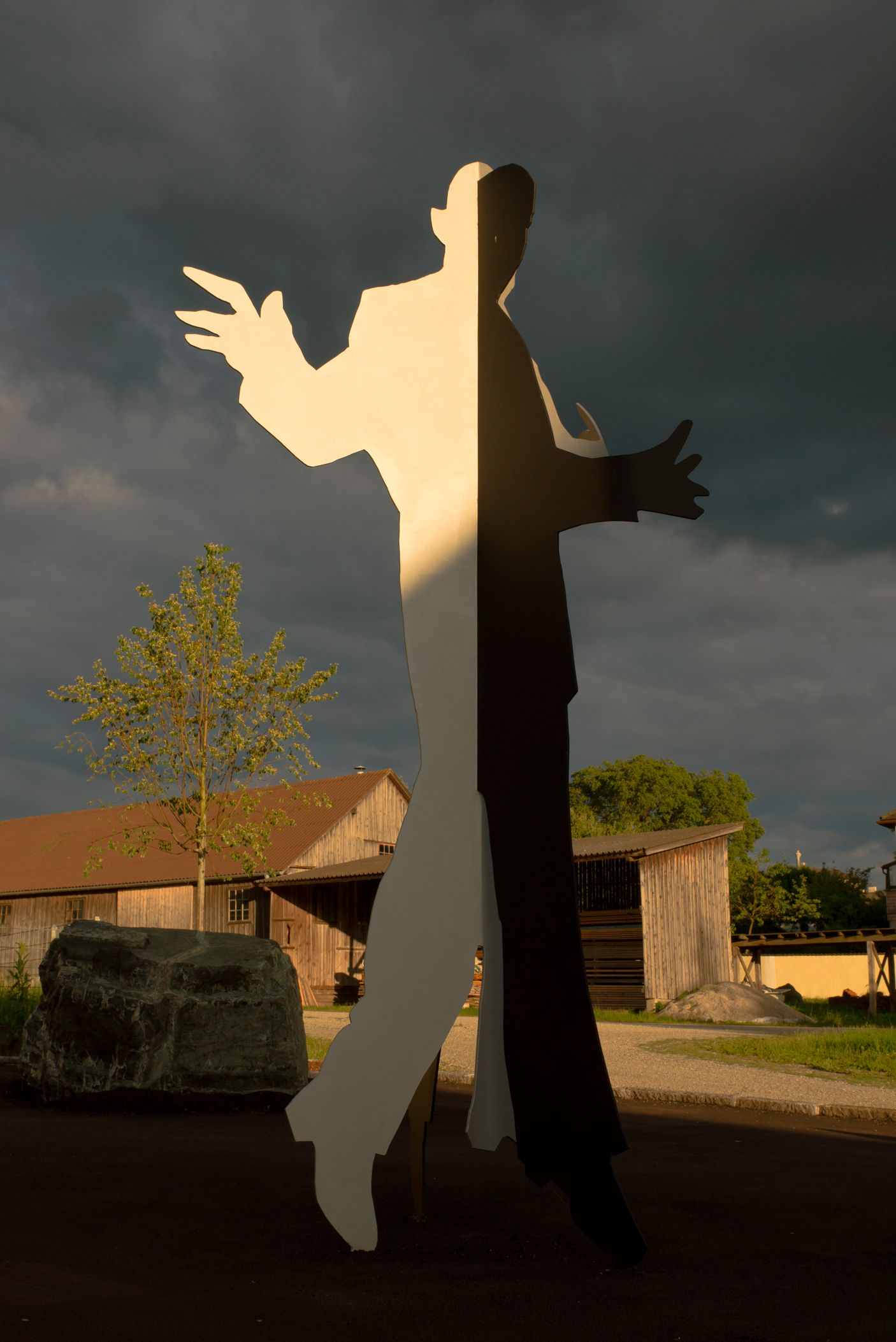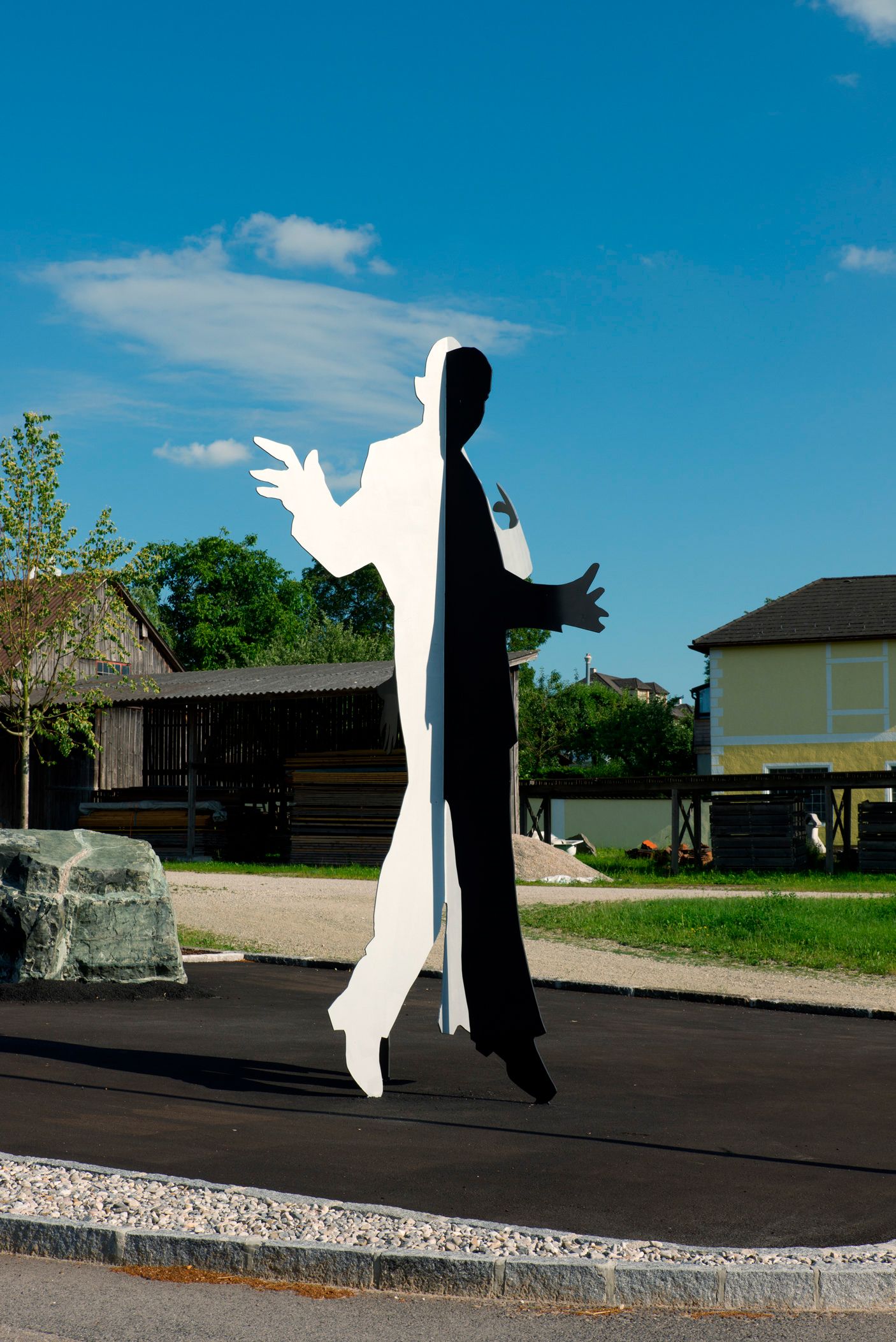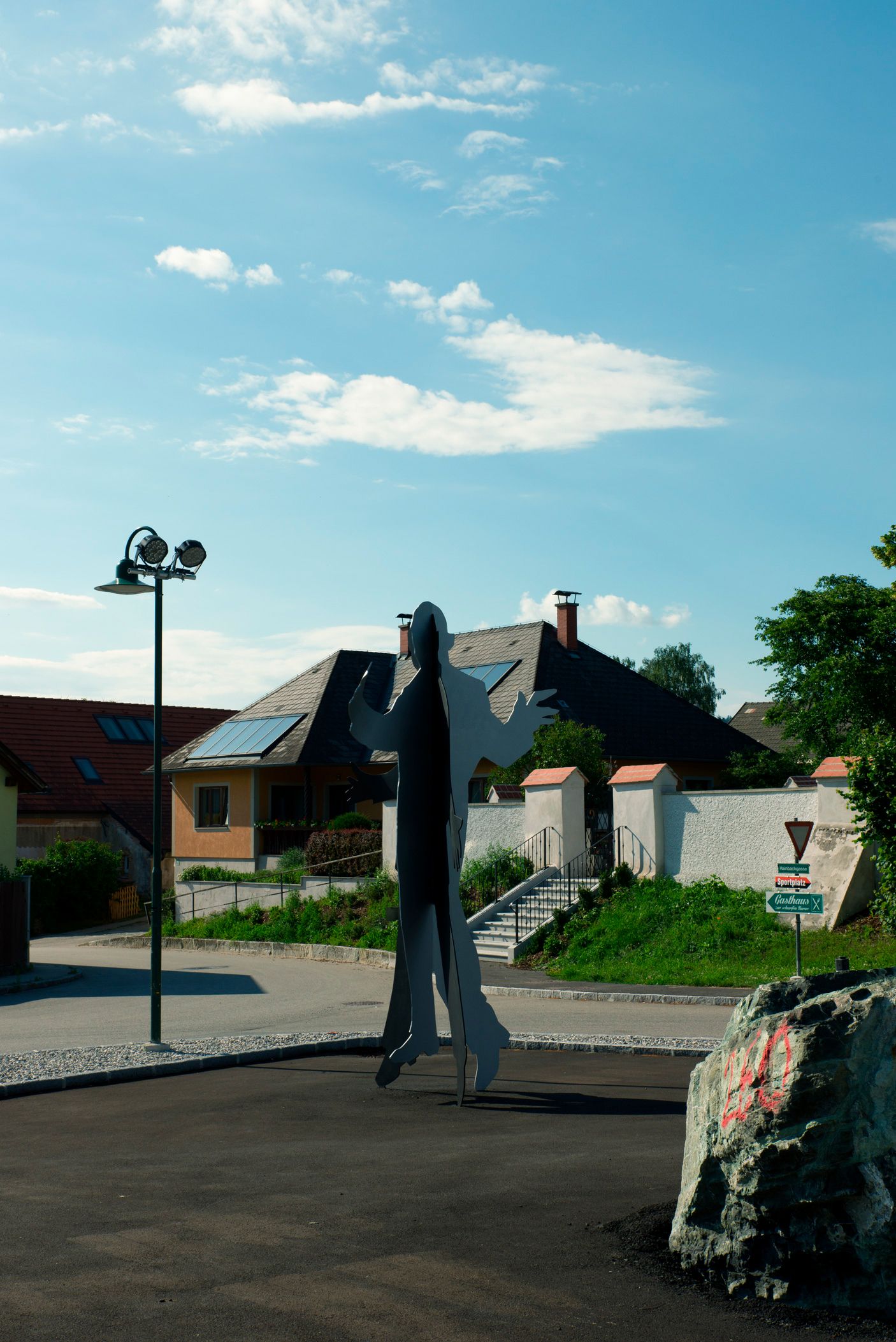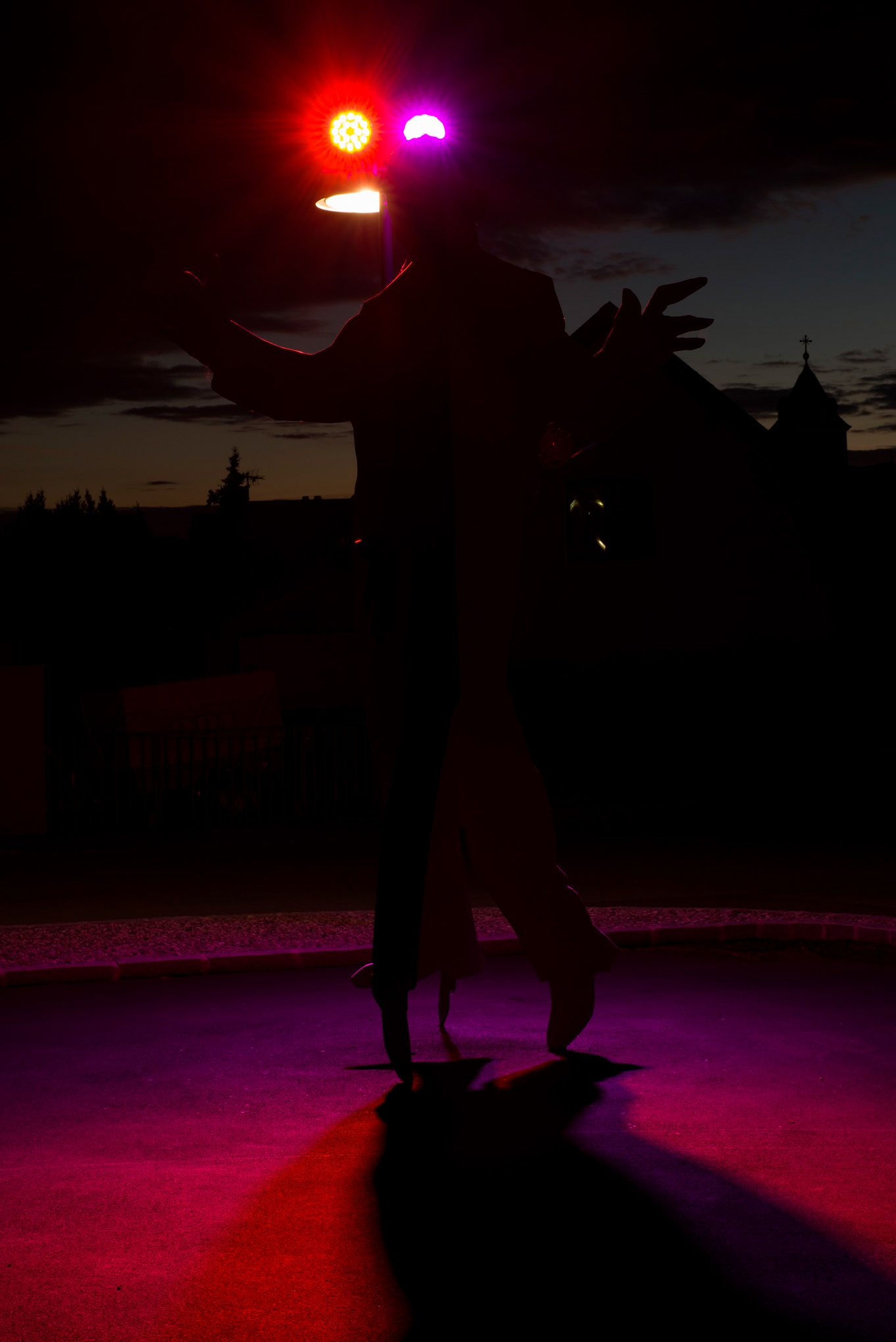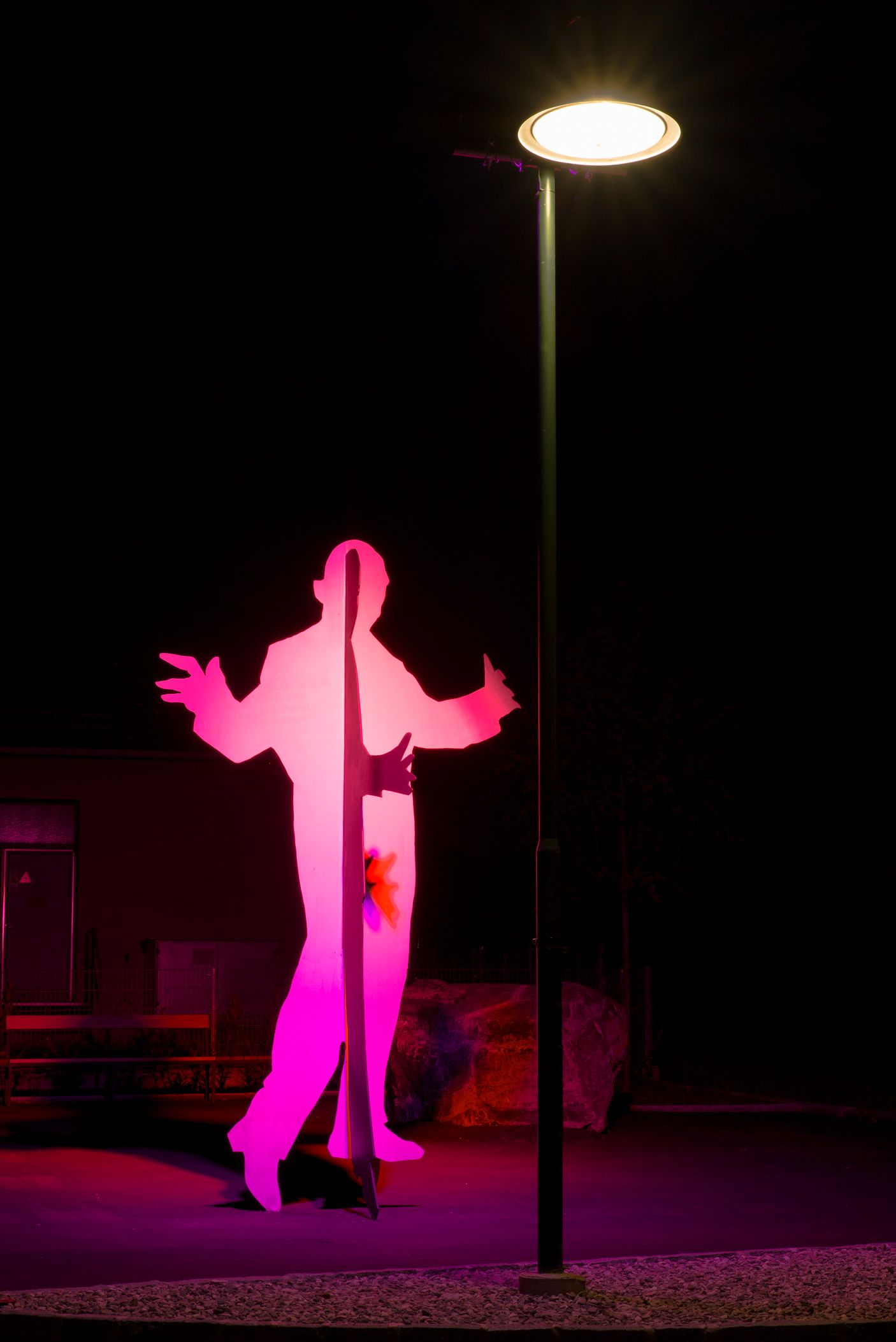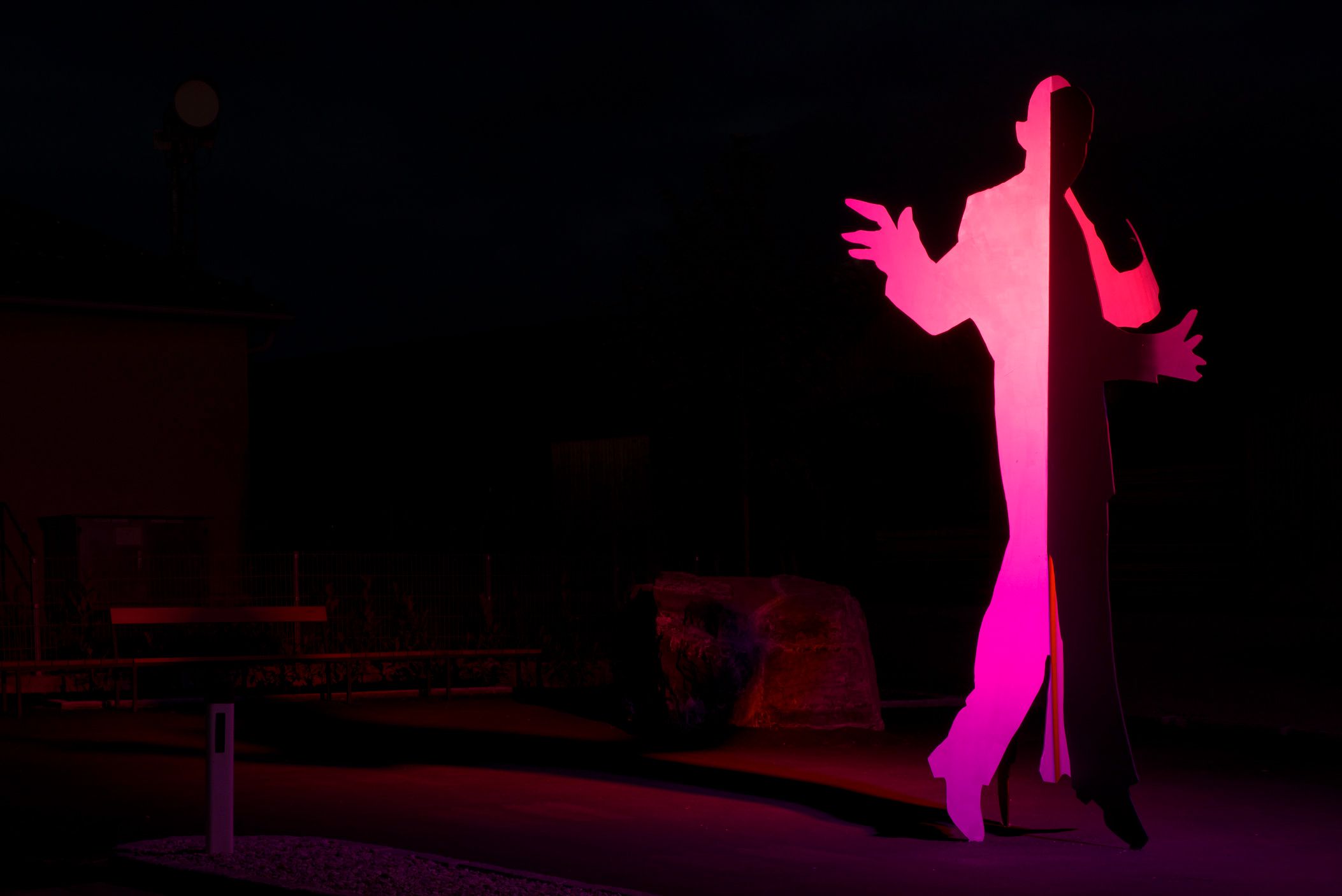Katrin Plavčak
:
Kommt der Komet oder Kommt Er zu Spät?
Back
Information
Katrin Plavčak’s Falco memorial draws from one of Falco’s rhymes Kommt der Komet oder kommt er zu spät (“Is the comet coming or is it actually too late?”). It resembles a three-part stage set with a four-meter-high silhouette of Falco next to a massive stone and a spotlight that illuminates the scene at night. A massive block of grey-green Serpentinite “plays” the role of the comet, as can be seen by the cracked the earth’s surface around it. Next to it stands the sculpture of Falco balancing on tip-toes, unharmed and unscathed. The four welded sheets of metal look as if they have been pieced together loosely by hand. Falco’s four arms are stretched out wide, his stylized fingers spread. Plavcak arrived at the form for this memorial while studying Falco’s body language. “He liked to strike a pose,” she says. Plavčak captured the all-embracing, far-reaching gesture of the golden age of pop music and planted it in Gansbach, Dunkelsteiner Wald. Her sculpture fulfills the town residents’ wish for a Falco memorial where Falco’s father Alois Hölzel grew up and still lives today.
Most contemporary popstars are incapable of such grand gestures. We no longer have a collection of platinum records on our shelves, with their covers and their informational inserts with coded impressions of styles, emotions, and attitudes, giving us the feeling that we are part of a community. We rarely sing the same songs that everyone knows anymore. To remember Falco means incorporating the culture from which his persona emerged in the first place. It is therefore fitting that Plavčak’s memorial is not about Falco’s face, his problems, or the folds of his exquisitely bespoke Helmut Lang suits. Kids hanging out at the new Falco Square today can access the Internet to find everything they want to know about Falco. That this is occurs in silence, that musical spaces and youth itself have become so much quieter, and that the difference and distinction that was once as valuable as gold in the record era are now met with mistrust are all shifts that have become noticeable in the twenty short years since Falco’s death. For this reason, it was important to Plavčak that the memorial “is not a colossal block in Gansbach.” Instead, she had to think of something Alexander Calder once said about how heavy sculptures also need to feel weightless.
When the sun goes down in Gansbach and the colorful spotlights go on, light and shadow play on the sculpture. The nature of this figure, which changes throughout the day like a moody popstar, is revealed, while we stand in Falco’s shadow. (Sara Khan)
